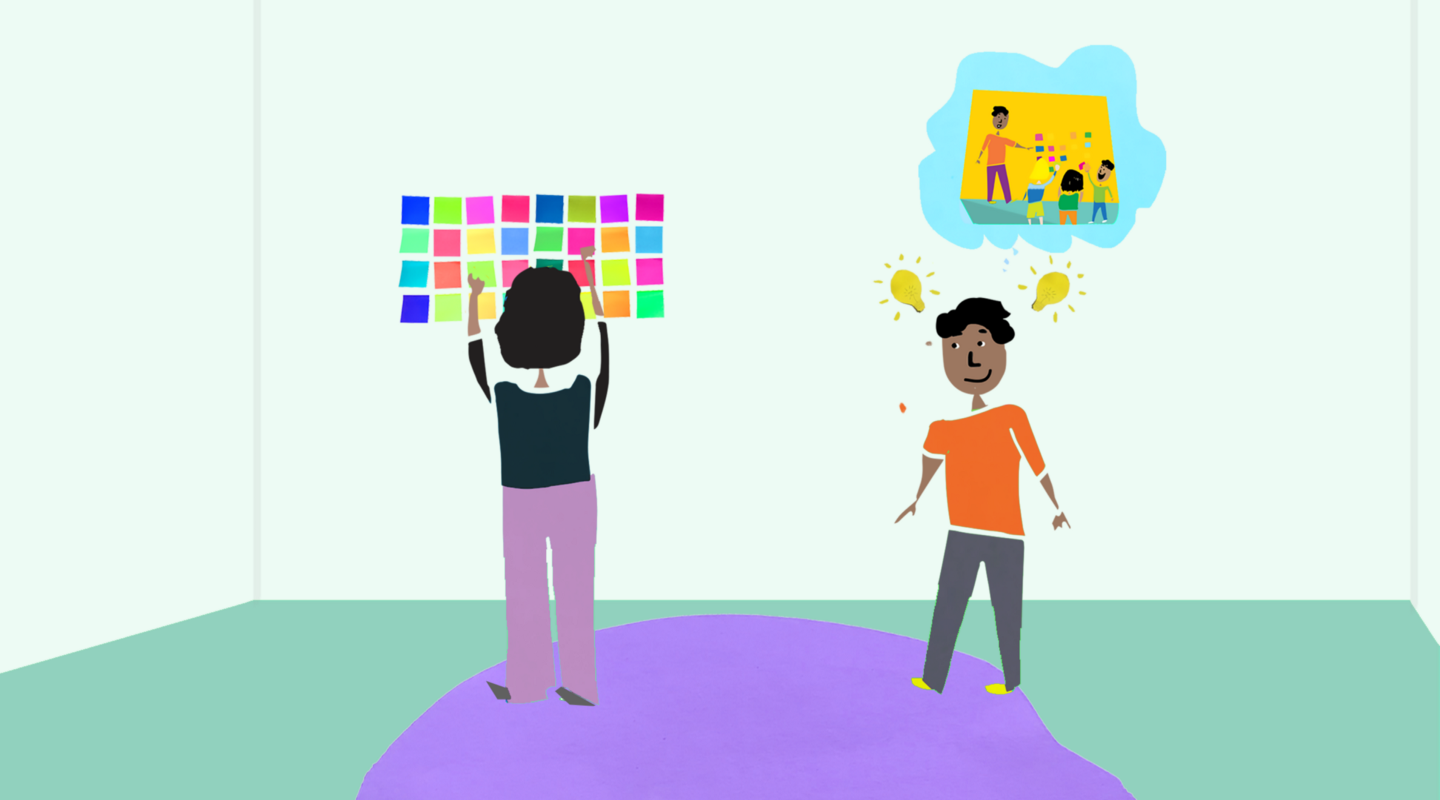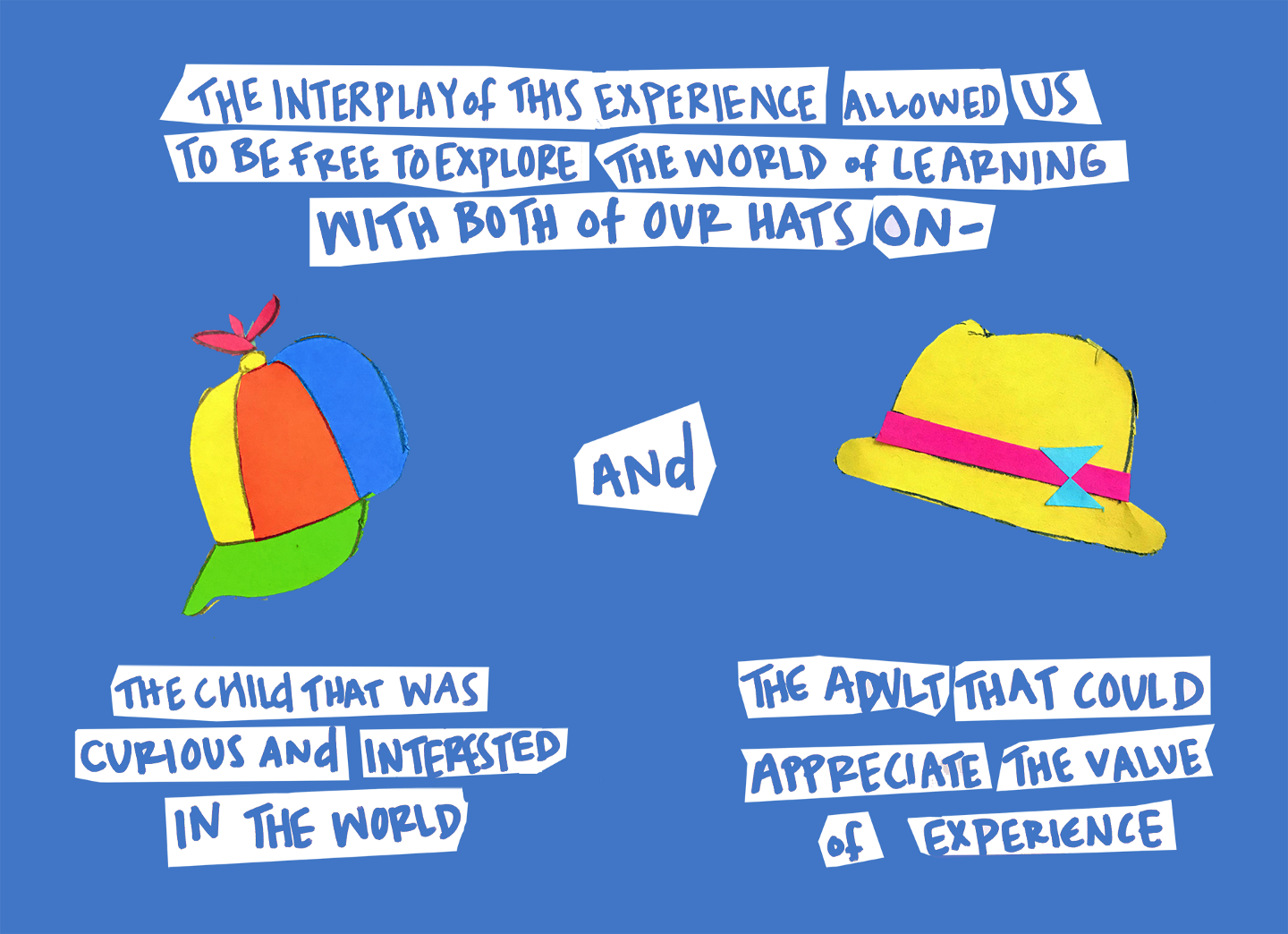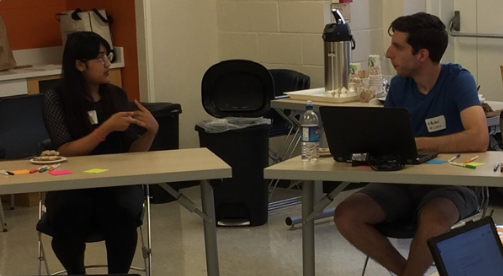Teacher-to-Teacher: Connecting Professional Learning to Classroom Practice

Dear #CSEdWeek Community,
It is 2015 and I am looking down the hallway. As kids pass in front of me, all I can feel is heartache. I wonder: Am I serving these kids to the best of my ability? How can I teach them 21st century skills, like coding and robotics, when I don’t even know how to do it myself? These kids need to learn how to code — it will make such a difference in their lives. I have to do something!
Fortunately, I stumbled upon, and subsequently attended, Harvard’s Creative Computing Workshop.
At the workshop, each step of our experience was a celebration of our inner child and a show of respect for our professional sage. For example, upon arriving we were greeted with chef-inspired hors d’oeuvres, and then placed in a setting that invited us to engage in meaningful conversation. When the session started, we were offered a table full of items that encouraged us to play and express our creative ideas. The interplay of this experience allowed us to be free to explore the world of learning with both of our hats on — the child that was curious and interested in the world, and the adult that could appreciate the value of the experience.

Each step of our journey in class was orchestrated, yet felt flexible and available for us to influence. Participants were engaged in a model of learning that was advanced by inquiry and served as a model of student engagement that was intensely inspiring. The Creative Computing workshop was not one class — it was a differentiated learning environment in which we were invited and supported in engaging in our own version of the class based on our own interest and learning style.
Not only was the workshop one of the best classes I have ever taken, it transformed me as a teacher by allowing me to reconstruct my understanding of how I could help my students.
Professional development for educators should transform the recipient. Harvard’s Creating Computing workshop brought educators of like mind into the same room and gave them the tools to transform their practice. Participants worked at their own pace, on a topic of their choosing, with the ability to take their learning to the next level — with support through the entire transformative process.
Education should offer students the same opportunity.
The betterment of my teaching practice led me to synchronize my reason for teaching–transforming lives by preparing students for their futures–with my personal love of STEM and my passion for helping students. I intuitively figured out a way to create learning experiences that compel students to apply their knowledge to a real life situation while inspiring them to be their best self. Thus, the STEM Impressionists program was born.
Here is an example of what I am talking about — meet a member of the STEM Impressionists, Abia:
My name is Abia. I first started using Scratch last summer when my teacher, Ms. DeHart, told me about an opportunity to attend a Scratch training program. Because I aspire to become a software engineer, I was eager to take advantage of the training so I agreed to attend. The week long training included completing various Scratch assignments and culminated in students teaming up to create a Scratch curriculum for kids of various ages. Ms. DeHart, who always wants students to use their newly acquired skills, invited me to attend the Scratch Meetups she was co-facilitating. I got to attend Scratch Meetups, and become a co-facilitator in discussions with adults about Scratch! The entire experience, from training to Meetup, has been amazing.
While I have a rudimentary knowledge of Scratch, going to Harvard enabled me to understand that students should never wait for me to learn every skill — I should be providing them the opportunity to learn from others, and then offering them opportunities to use their skills to teach others. School should be a place where students learn that they have a voice, and that their voice can influence what can happen in their lives and in the world. To transform our educational system we need to partner with students, let them learn at their own pace, let them practice their skills via peer-to-peer teaching, and offer them opportunities that only adults that love them would offer. We need to become the wind beneath their wings!
How do you design learning environments that are organized and structured, while supporting openness and creativity?
Sincerely,
Angela DeHart
Angela DeHart is a Family and Consumer Sciences (FACS) teacher and STEM Impressionists facilitator in the Fairfax County Public Schools in Washington, DC. Angela also co-organizes and facilitates the DC ScratchEd Meetups.
In celebration of #TeacherLearning this #CSEdWeek, ScratchEd shared a letter from a teacher to the #CSEdWeek educator community each day, on the theme of “Creative Computing: What? Why? How?”You can still join the conversation on Facebook and Twitter, using #TeacherLearning!

